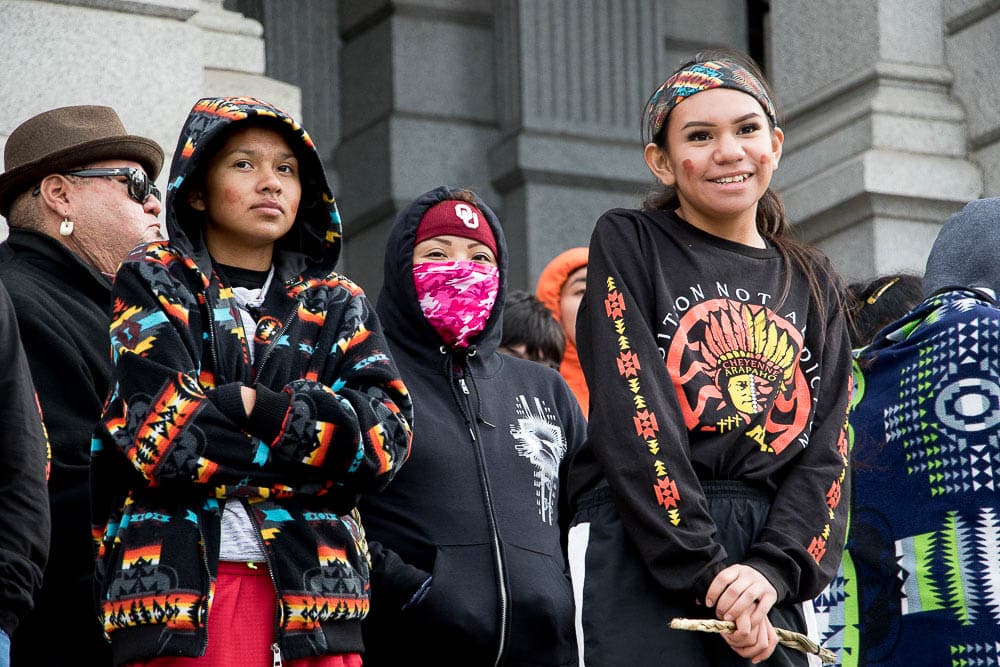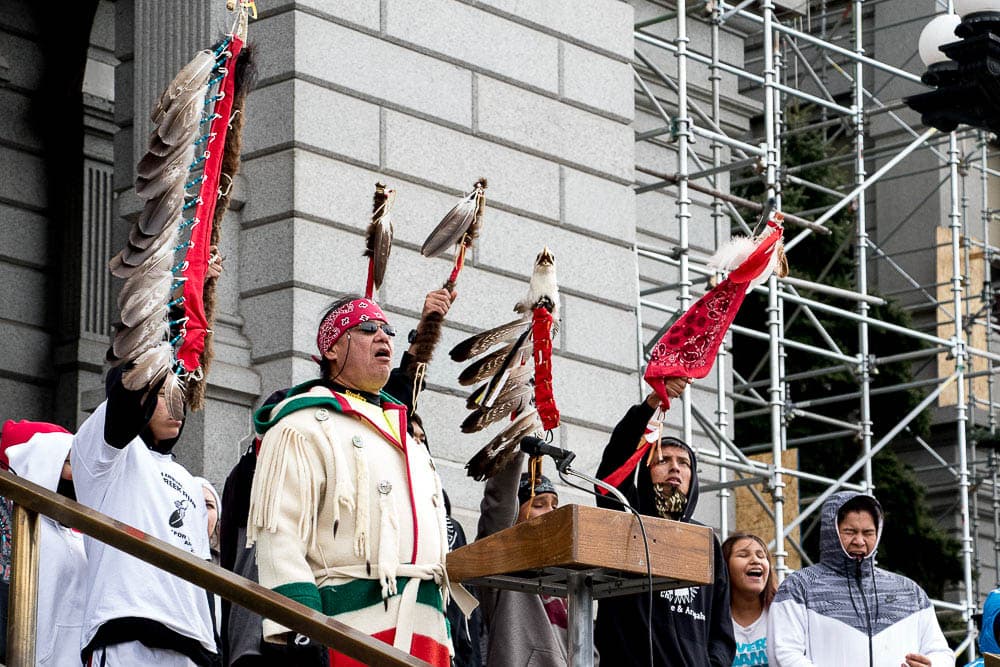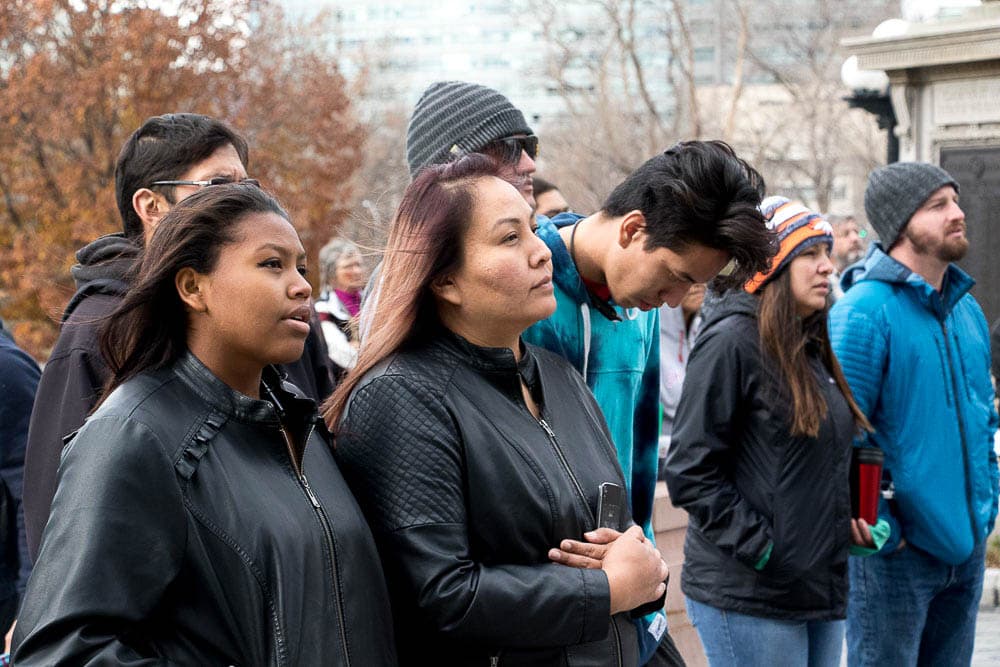
Hundreds gathered at the state capitol Sunday for the conclusion of the 18th annual Sand Creek Massacre Run—an approximately 180 mile journey, commemorating the horrendous massacre of Arapaho and Cheyenne tribe members at Sand Creek in 1864.
While this year’s ceremonies mimicked those of past years, this year, more young members of the Cheyenne and Arapaho nations turned out to participate in the run.
That includes 17-year-old Veronica Kay Youngbull, a descendent of Sand Creek survivors from the Arapaho and Southern Cheyenne tribes. This is her second year participating in the run and she hopes to bring more of her peers into the tradition.
“The youth are watching us run and we are being role models for them to keep supporting this cause, to keep representing our people and the pain they suffered,” said Youngbull.
“Just going through the whole event, they get in touch with their culture,” Northern Cheyenne Chief Otto Braided Hair said. “They have their elders with them, hearing the stories and the history, and feeling the connection.”

For the past four days, more than 200 total members of the Northern Cheyenne Tribe of Montana, the Northern Arapaho Tribe of Wyoming, the Southern Cheyenne Tribe of Oklahoma and others have traveled about 180 miles from Kiowa County, Colorado, north to Denver. They’ve made this journey for the past 18 years.
The event they commemorate is a bloody one.
In 1864, volunteer militia from Colorado invaded an encampment of Cheyenne and Arapaho Tribes, killing an estimated 160 men, women and children, according to the National Park Service. They then mutilated the bodies and carried gruesome “trophies” to Denver to parade through the streets.
According to Chief Braided Hair, the run approximates the same path taken, 152 years ago, by the soldiers from Sand Creek to Denver. But instead of dismembered body parts, today, Native American descendants of massacre survivors and their supporters carry braided sweetgrass.
Youngbull explained that the sweetgrass cleanses the path of the massacre. She also described moments of hardship she encountered along the run.
“I did a full seven miles yesterday,” she said. “I got past it by praying, that’s what we did the whole run. We prayed to have a safe journey and to get here—and for our ancestors.”

Chief Braided Hair hopes this and recent displays of solidarity with Native American tradition will motivate other tribes, especially in light of the recent, heated political climate in America.
“There is a need for us to return to our homelands and get in touch with the misfortune,” he said. “I think Standing Rock is a good example...and I hope it does motivate other tribes to protect their homelands and preserve their traditional culture.”
Multimedia business & healthcare reporter Chloe Aiello can be reached via email at [email protected] or twitter.com/chlobo_ilo.
Subscribe to Denverite’s newsletter here.











